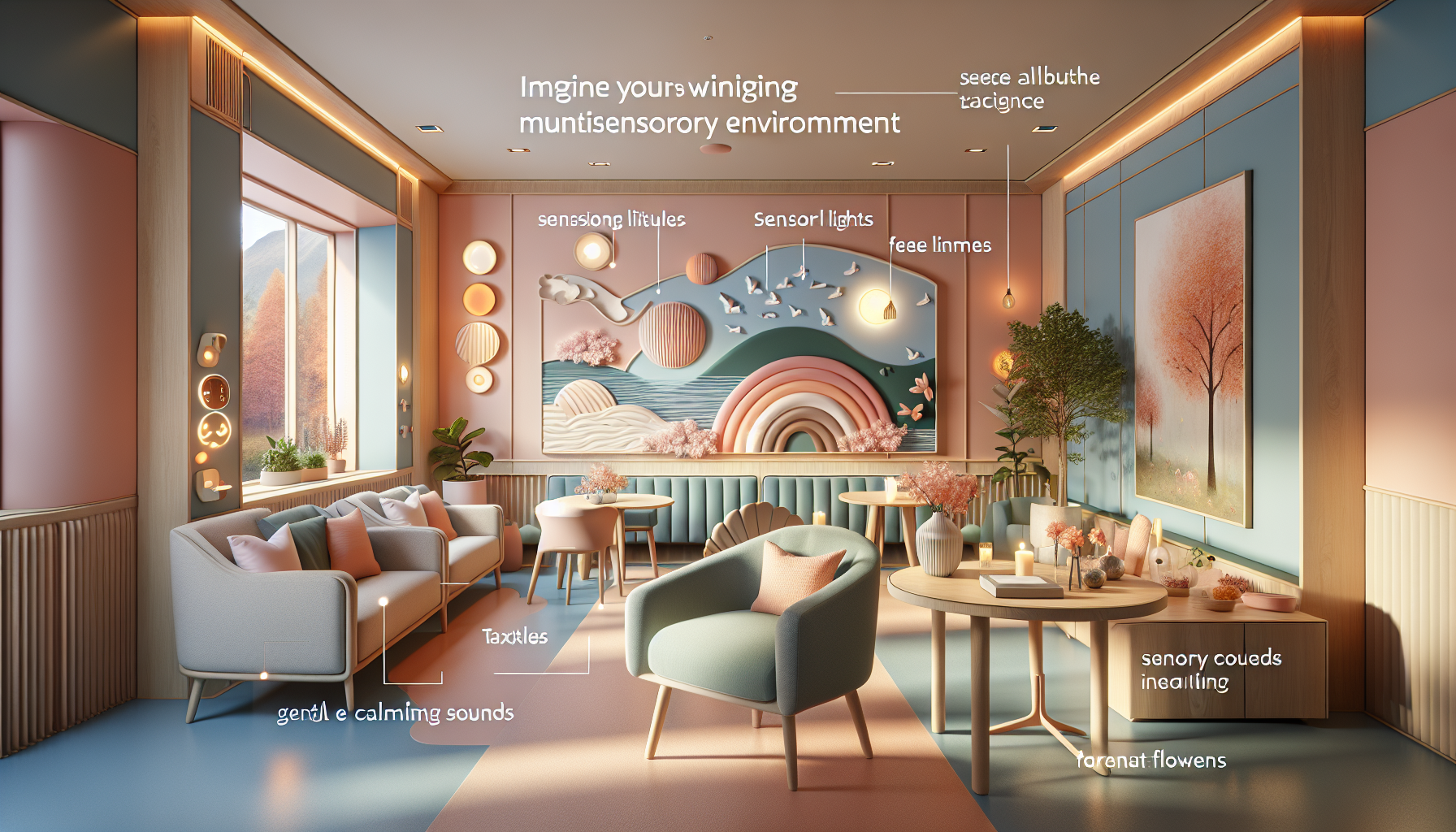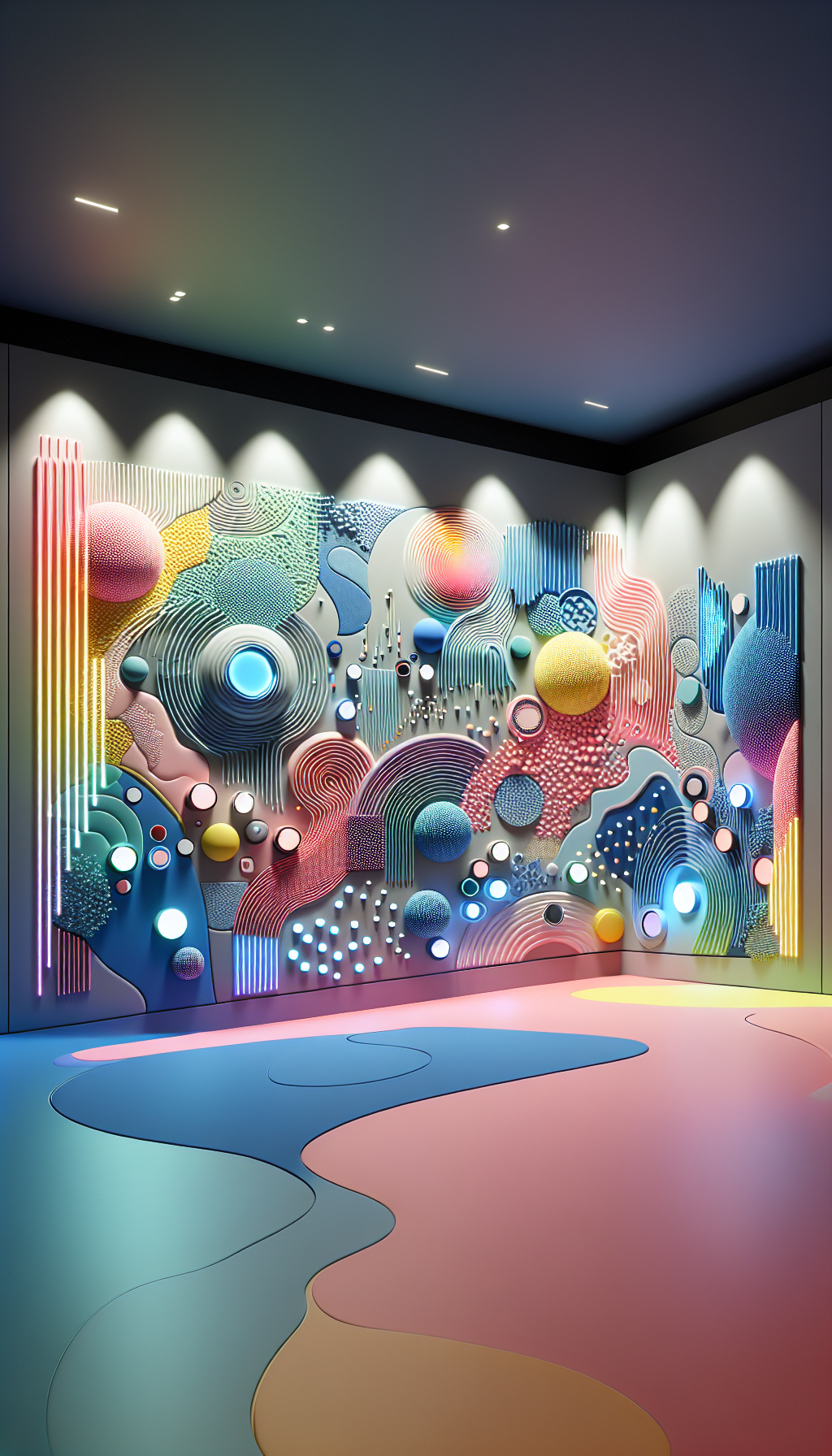Multisensory environments, also known as sensory rooms or Snoezelen, are specially designed spaces that integrate various sensory stimuli to provide therapeutic experiences for individuals with cognitive challenges, such as those with dementia. These environments can range from simple setups with comfortable seating and calming lighting to more sophisticated rooms equipped with tactile panels, aroma diffusers, and interactive technology. The primary objective of these spaces is to engage users in a non-threatening way to induce relaxation, reduce agitation, and enhance their overall cognitive function.
Understanding the Impact of Sensory Stimulation on Dementia
Dementia is a progressive condition that affects cognitive processes, including memory, thinking, orientation, comprehension, calculation, learning capacity, language, and judgment. However, sensory perception is not necessarily diminished in the early stages of dementia, which means that multisensory environments can still effectively stimulate the brain and evoke positive emotional responses.
Research has shown that engaging multiple senses can have a profound impact on individuals with dementia by activating different brain areas, thereby slowing cognitive decline and improving quality of life. A study by the Alzheimer’s Society reveals that tailor-made sensory experiences can promote relaxation, facilitate communication, and reduce the occurrence of challenging behaviors in people with dementia.
The Role of Sensory Health
Sensory health plays a pivotal role in our overall well-being, particularly for those struggling with cognitive impairments. Sensory input is fundamental to the human experience, and multisensory environments are designed to deliver therapeutic sensory experiences that can benefit cognitive function. For more in-depth insights on sensory health, consider exploring Avix Health’s dedicated section on sensory health.
Key Components of Multisensory Environments
Visual Stimulation
Multisensory rooms often incorporate visual elements like fiber optic lights, projectors displaying calming scenes, or bubble tubes to create a visually stimulating yet relaxing environment. These elements can help individuals with dementia to focus their attention, which may lead to increased clarity of thought and improved mood.
Auditory Stimulation
Soothing sounds and music are common auditory components of multisensory environments. Gentle, rhythmic sounds can provide a sense of security and familiarity, while music can trigger memories and emotions, aiding in reminiscence therapy.
Tactile Stimulation
Tactile stimulation involves the sense of touch, which can be facilitated through different textures, temperatures, and vibration. Objects like textured panels, soft fabrics, or even simple activities like handling kinetic sand can provide comforting tactile feedback.
Olfactory and Gustatory Stimulation
Introducing familiar scents and tastes can be powerful in evoking memories and positive associations. Aromatherapy using essential oils is a common practice in multisensory rooms, while offering favorite foods or flavors can help to stimulate appetite and provide comfort.
Proprioceptive and Vestibular Stimulation
Proprioception refers to the body’s ability to sense its position in space, while the vestibular system relates to balance and spatial orientation. Equipment like weighted blankets or rocking chairs can help engage these senses, promoting a sense of security and calmness.
The Cognitive Benefits of Multisensory Environments
Enhanced Memory Recall
Multisensory stimulation can trigger memories and associations, which is particularly beneficial for individuals with dementia who may struggle with long-term memory retention. Sensory cues can help in recalling past experiences, thereby improving cognitive function and personal identity.
Improved Communication
By stimulating different senses, individuals with dementia may find new ways to express themselves, especially if verbal communication has become challenging. These environments can facilitate non-verbal communication through shared experiences and reactions to sensory stimuli.
Reduction in Agitation and Anxiety
Sensory rooms are designed to be calming spaces that can help reduce feelings of anxiety and agitation. The controlled and safe environment allows individuals with dementia to relax and engage at their own pace, which can lead to a decrease in stress-related behaviors.
Stimulation of Cognitive Processes
Engaging in sensory activities can stimulate cognitive processes, encouraging individuals with dementia to use their remaining abilities. Activities that involve sorting, matching, or categorizing can promote thinking and concentration.
Social Interaction
Multisensory environments often promote social interaction, whether it’s with caregivers, family members, or peers. Shared sensory experiences can foster connections and provide opportunities for meaningful engagement.
Promotion of Physical Activity
Certain elements in a multisensory room, such as interactive floors or walls, can encourage gentle physical activity, which is essential for maintaining muscle strength and cardiovascular health. The significance of proprioceptive feedback in physical therapy highlights the importance of movement and how it contributes to overall health, including cognitive aspects.
Implementing Multisensory Environments in Dementia Care
Creating a multisensory environment requires careful planning and consideration of the individual needs of those with dementia. It’s important to tailor the sensory experiences to the preferences and tolerances of each person, as some may be sensitive to certain stimuli. Caregivers and healthcare professionals should be trained to facilitate sensory sessions effectively and to observe the responses of individuals to adapt the environment accordingly.
Best Practices for Multisensory Environments
- Start with a thorough assessment of the individual’s sensory preferences and needs.
- Introduce sensory stimuli gradually to avoid overwhelming the person.
- Monitor responses to different stimuli and adjust the environment as needed.
- Encourage interaction with the environment but allow the individual to control their level of engagement.
- Focus on creating a calming and safe atmosphere where individuals feel secure.
Conclusion
Multisensory environments offer a unique and effective approach to dementia care, providing cognitive benefits that can enhance the quality of life for individuals with this condition. By engaging multiple senses in a controlled and therapeutic setting, these environments can help to maintain cognitive functions, promote relaxation, and offer opportunities for joy and engagement in a world that may increasingly become confusing and frightening.
For further resources on the topic, the following external articles provide valuable information:
- The Lancet Commission’s report on dementia prevention, intervention, and care highlights the importance of sensory stimulation in managing dementia symptoms.
- The Journal of Dementia Care offers a wealth of articles on innovative care practices, including the use of multisensory environments.
- The Dementia Services Development Centre at the University of Stirling provides guidelines on creating dementia-friendly environments, including sensory considerations.
To explore additional strategies related to sensory health and dementia care, consider reading about Sensory Enrichment Therapy for Post-Traumatic Stress Disorder, Strategies to Enhance Sensory Integration in Adults with Autism, and Techniques for Supporting Vestibular Health in the Elderly. These articles provide further insights into the role of sensory experiences in health and well-being.



